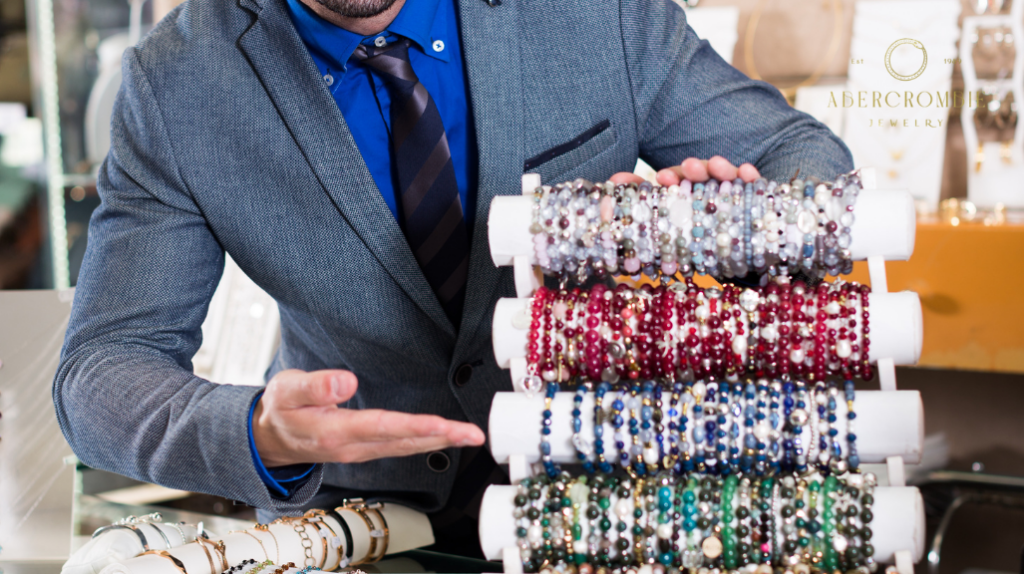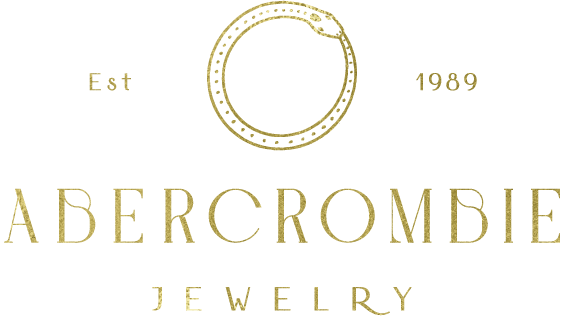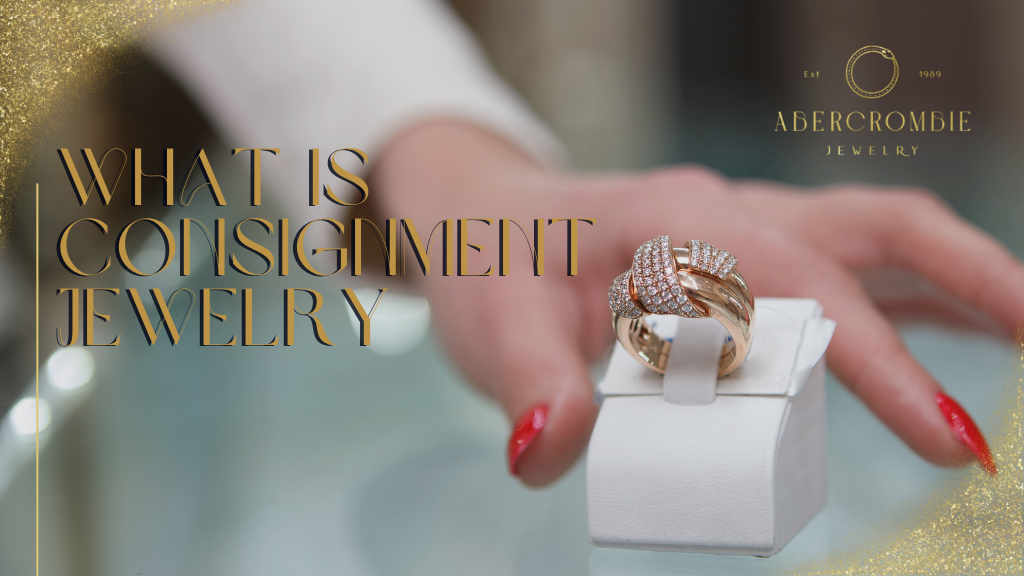- Key Takeaways
- Definition of Consignment Jewelry
- History of Consignment Jewelry
- How Consignment Works
- Benefits for Sellers
- Benefits for Buyers
- Types of Consignment Jewelry
- Evaluating Jewelry for Consignment
- Pricing Your Jewelry
- Selecting a Consignment Shop
- Consignment Contract Basics
- Marketing Consignment Jewelry
- Payment Terms and Timelines
- Tips for Successful Consignment
- Common Misconceptions
- Future Trends in Consignment Jewelry
- Frequently Asked Questions
Consignment jewelry offers a unique opportunity for sellers to display their pieces in retail settings without giving up ownership until the item is sold. This arrangement allows both jewelry owners and retailers to share profits, with a percentage of the sale going to the retailer. At Abercrombie Jewelry, we specialize in consignment, offering customers a strategic way to sell their valuable pieces while expanding their market reach. But what is consignment jewelry exactly? It’s a way for artisans, collectors, and sellers to reduce financial risk, enabling them to showcase their jewelry to a broader audience without upfront costs.
Key Takeaways
- Consignment jewelry involves selling pieces in a retail setting while the consignor retains ownership until sold.
- A pre-agreed percentage of the sale price is paid to the retailer as a commission.
- It features various types like vintage, designer, contemporary, estate, and custom jewelry.
- The process includes evaluation, listing, marketing, customer interaction, and transaction management.
- Benefits include risk mitigation for sellers and access to unique, curated selections for buyers.
Definition of Consignment Jewelry

Consignment jewelry refers to pieces placed for sale in a retail setting by individuals or entities. The consignor retains ownership until the item is sold, at which point a pre-agreed percentage of the sale price is paid to the retailer. Within this framework, the consignment definition establishes a relationship that benefits both parties: the consignor can showcase their jewelry to a broader audience without upfront costs, while the retailer enhances their inventory with diverse items without immediate outlay.
Jewelry’s meaning in consignment extends beyond mere adornment; it includes various items such as rings, necklaces, bracelets, and earrings, often unique or vintage. This allows consumers to access a curated selection that might not be available through traditional retail channels. The consignment model allows jewelry owners to monetize their assets while offering retailers a diverse inventory that can attract a wide customer base.
Consignment jewelry represents a symbiotic relationship where trust and mutual benefit are paramount. It is a nuanced market segment that requires detailed knowledge of valuation, market trends, and consumer preferences to maximize its potential. This understanding fosters a sense of belonging among participants who value fine jewelry’s economic and aesthetic aspects.
History of Consignment Jewelry
The practice of jewelry consignment dates back to ancient trade systems, where artisans and merchants collaborated to distribute valuable adornments across burgeoning marketplaces. This age-old collaboration allowed for the widespread dissemination of culturally significant pieces, embedding jewelry consignments in economic and social history annals.
Throughout the centuries, several historical milestones underscore the evolution of consignment jewelry:
- Ancient Egypt: Skilled artisans consigned intricate gold and gemstone pieces to traders, facilitating the spread of Egyptian cultural artifacts.
- Silk Road: This vast trade network saw the exchange of consigned jewelry, enriching cross-cultural interactions and commerce.
- Medieval Europe: Guilds and workshops consigned high-value jewelry to merchants, who sold these luxury items to the burgeoning middle class.
- Colonial America: Artisans relied on consignment to reach distant markets, pivotal in the colonial economy.
Victorian Era: The period witnessed a surge in consignment practices, with elaborate jewelry pieces reflecting the era’s aesthetic and social hierarchies.
The cultural significance of consignment jewelry cannot be overstated. It facilitated the economic viability of artisans and the cross-cultural exchange of art and tradition. Each historical milestone marks a phase where consignment played an essential role in shaping the jewelry industry’s dynamics and reach across diverse societies.
How Consignment Works

Consignment jewelry involves a collaborative arrangement where the jeweler sells items on behalf of the owner, ensuring a streamlined selling process. Payment structures typically include a predetermined commission, incentivizing both parties to achieve the best sales performance.
Understanding these mechanisms is essential for maximizing financial outcomes and minimizing potential risks.
Selling Process Explained
Understanding the intricacies of the consignment jewelry selling process can provide sellers and buyers with significant advantages in maneuvering the market efficiently. By leveraging established online marketplaces and prioritizing exceptional customer service, sellers can maximize their reach and credibility, while buyers can access a curated selection of high-quality pieces.
The consignment selling process typically unfolds through the following steps:
- Evaluation and Authentication: Sellers must submit their jewelry for professional evaluation and authentication to guarantee its value and legitimacy.
- Listing and Presentation: Once authenticated, the jewelry is professionally photographed and listed on online marketplaces, complete with detailed descriptions and pricing.
- Marketing and Exposure: Consignment shops often employ robust marketing strategies, including social media promotions and email campaigns, to attract potential buyers.
- Customer Interaction: High-quality customer service is vital, as it involves handling inquiries, providing additional information, and facilitating viewings if necessary.
Transaction Management: When a buyer decides to purchase, the consignment shop oversees the transaction process, ensuring secure payment and shipping.
This structured approach enhances trust and transparency and fosters a sense of community among sellers and buyers, who share a mutual appreciation for fine jewelry.
Payment and Commissions
To fully comprehend the financial dynamics of consignment jewelry, it is essential to analyze the payment structures and commission rates that underpin this unique business model. When a piece of jewelry is consigned, the consignor (owner) and consignee (seller) enter into an agreement where the seller showcases and sells the item on behalf of the owner. Payment methods typically involve the consignee disbursing funds to the consignor only after the jewelry piece is sold.
Commission structures are a pivotal element in this arrangement. The consignee retains a predetermined percentage of the sale price as their commission, which can vary widely depending on factors such as the type of jewelry, market demand, and the reputation of the consignment store. Standard commission rates often range between 20% to 50%. This variance necessitates a clear understanding of the terms outlined in consignment agreements to avoid potential disputes.
This structure benefits both parties: consignors gain access to broader markets without upfront costs, while consignees earn commissions for their sales expertise and retail space. Understanding these financial mechanics fosters trust and guarantees a mutually beneficial relationship in the consignment jewelry market.
Benefits for Sellers
By utilizing consignment arrangements, sellers can greatly diminish their financial risk while optimizing exposure for their jewelry inventory. This method offers substantial benefits, particularly regarding seller flexibility and inventory reduction.
Sellers can place their products in reputable retail locations without needing upfront investment, thereby minimizing the financial burdens associated with unsold stock.
The advantages of consignment jewelry for sellers include:
- Risk Mitigation: Sellers are not required to purchase their inventory outright, alleviating the financial risk of unsold items.
- Increased Exposure: Jewelry items are displayed in established retail spaces, attracting a broader customer base and enhancing market visibility.
- Cost Efficiency: With consignment, sellers avoid storage and display costs, allowing them to utilize their resources more effectively.
- Seller Flexibility: This arrangement permits sellers to test new markets or product lines without committing to large inventories.
Inventory Reduction: Consignment helps systematically reduce excess stock, ensuring a more streamlined inventory that aligns with current market demands.
These benefits collectively contribute to a more sustainable and profitable business model for jewelry sellers.
Benefits for Buyers

Consignment jewelry offers significant advantages for buyers, including access to unique pieces often unavailable through traditional retail channels. This market also provides an opportunity to acquire luxury items at more affordable prices, making high-quality jewelry attainable for a broader audience.
Consequently, purchasing consignment jewelry can be economically savvy and aesthetically rewarding.
Access to Unique Pieces
One of the primary benefits for buyers in the consignment jewelry market is unparalleled access to rare and distinctive pieces often unavailable in traditional retail settings. This access allows discerning collectors and enthusiasts to find custom designs and vintage finds that reflect a unique blend of craftsmanship and history. Consignment jewelry stores often curate their collections from various sources, ensuring diverse styles and eras.
Consignment jewelry’s allure lies in each piece’s exclusivity and individuality. Buyers can encounter:
- One-of-a-kind custom designs: Handcrafted pieces tailored to specific tastes and preferences, often featuring intricate details and unique materials.
- Antique treasures: Jewelry from bygone eras, offering a glimpse into the artistry and culture of the past.
- Signed pieces by renowned designers: Items that bear celebrated jewelers’ mark, adding value and prestige.
- Unusual gemstones: Rare and exotic stones not commonly found in mainstream jewelry stores.
Artisanal craftsmanship: Works of art created by skilled artisans, showcasing exceptional techniques and creativity.
Consignment jewelry offers a compelling and enriching experience for those who seek not just adornment but a connection to history and individuality.
Affordable Luxury Options
While the exclusivity of consignment jewelry captivates collectors, another compelling advantage is the opportunity to acquire luxury pieces at more accessible price points. Consignment stores offer a range of luxury alternatives that cater to buyers who seek high-quality, budget-friendly options without compromising on elegance or craftsmanship. This makes consignment jewelry an ideal choice for those who wish to indulge in luxury without the premium price tag.
| Benefit | Description |
| Cost Savings | Significant reductions compared to retail prices |
| Authenticity Assurance | Verified authenticity through expert appraisal |
| Sustainable Choice | Contributes to environmentally conscious buying |
The cost savings are a primary attraction, often allowing buyers to obtain exquisite pieces at a fraction of their original price. Expert appraisals guarantee that each item meets stringent quality standards, providing assurance of peace of mind and authenticity. Additionally, choosing consignment jewelry aligns with sustainable consumption, as it encourages the reuse and recycling of fine pieces, thereby reducing the environmental impact of new jewelry production.
Types of Consignment Jewelry

Consignment jewelry encompasses a diverse array of categories, including vintage pieces, designer creations, and contemporary styles. Each offers unique value and appeals to different segments of the market.
Vintage pieces, often characterized by their historical significance and timeless elegance, attract collectors and enthusiasts who appreciate the craftsmanship and stories behind these items.
Designer collaborations, on the other hand, feature limited-edition pieces created through partnerships between renowned designers and jewelry brands, providing an exclusive touch that appeals to fashion-forward individuals.
Contemporary styles in consignment jewelry include modern, trend-driven designs that cater to those seeking the latest in fashion. These pieces often incorporate innovative materials and cutting-edge techniques, reflecting the current tastes and preferences of the market.
Additionally, estate jewelry, which comprises previously owned items ranging from antique to modern, offers a broad selection for those looking for unique, high-quality pieces at a fraction of retail prices.
Key categories of consignment jewelry include:
- Vintage pieces: Timeless artifacts from bygone eras.
- Designer collaborations: Exclusive, limited-edition creations.
- Contemporary styles: Modern, trend-driven designs.
- Estate jewelry: Previously owned treasures spanning multiple periods.
Custom pieces: Unique items crafted to individual specifications.
Evaluating Jewelry for Consignment
Accurate evaluation of jewelry for consignment necessitates thoroughly examining factors such as authenticity, condition, provenance, and market demand to determine its true value and potential resale price. A meticulous quality evaluation begins with authenticity verification, ensuring the piece is genuine and not counterfeit. This often involves inspecting hallmarks, conducting metal purity tests, and verifying gemstone certifications.
Condition is another critical factor; jewelry in pristine condition typically commands higher resale prices. Inspecting for any wear, damage, or need for repairs is essential. Provenance plays a significant role as well. A documented history, including original purchase receipts, previous appraisals, and notable ownership, can enhance the piece’s desirability and value.
Market demand must also be considered. Understanding current trends and consumer preferences can provide insights into how quickly a piece might sell and at what price range. This involves analyzing recent sales data and staying informed about popular styles and materials.
Pricing Your Jewelry

Determining the suitable price for your jewelry requires a thorough analysis of various factors, including intrinsic value, market trends, and competitive pricing within the consignment sector. Accurate pricing is essential to attract potential buyers while ensuring you receive fair value for your pieces.
To establish an effective pricing strategy, consider the following:
- Intrinsic Value: Evaluate the material worth of your jewelry, including the quality and type of gemstones and precious metals.
- Market Demand: Analyze current market trends to understand what styles and types of jewelry are in high demand.
- Condition: Assess the physical state of the jewelry, as well as maintain pieces that fetch higher prices.
- Provenance: Determine if the jewelry has historical significance or a designer label, which can substantially increase its value.
Competitive Pricing: Research similar items in the consignment market to gauge competitive pricing and position your jewelry appropriately.
Pricing strategies should be adaptive and responsive to shifts in market demand, ensuring that your jewelry remains attractive to buyers while reflecting its true worth. This balanced approach secures a successful sale and fosters trust and credibility within the consignment community.
Selecting a Consignment Shop
When selecting a consignment shop for your jewelry, it is important to conduct thorough research to ensure the establishment aligns with your sales goals and offers a reputable, trustworthy environment. Start by evaluating the shop location, as this can considerably impact foot traffic and the type of clientele frequenting the store. Prime locations in affluent areas generally attract customers willing to invest in high-quality jewelry, increasing the likelihood of a successful sale.
Next, explore customer reviews. These offer invaluable insights into the experiences of previous consignors and buyers. Look for patterns in feedback that highlight the shop’s strengths and weaknesses, paying particular attention to comments on staff professionalism, customer service, and the transparency of the consignment process. High ratings and positive reviews indicate a shop’s reliability and effectiveness in selling consigned items.
Additionally, visit the shop in person if possible. This allows you to assess the display quality and overall aesthetic, which should reflect the value of your jewelry. An inviting, well-maintained environment enhances the appeal of your pieces to potential buyers, optimizing your consignment success. You can ensure a profitable and satisfactory consignment experience by prioritizing these factors.
Consignment Contract Basics

After selecting an appropriate consignment shop, understanding the consignment contract becomes vital to guarantee that all terms and conditions are clearly defined and mutually beneficial. A well-drafted consignment contract safeguards both the consignor and the consignee, ensuring transparent and fair dealings.
Key contract clauses and legal requirements to take into account include:
- Commission Rates: Specify the percentage of sales the consignment shop will retain as commission.
- Duration of Consignment: Define the period during which the jewelry will be on consignment, including start and end dates.
- Pricing and Discounts: Outline how the initial pricing will be determined and the protocol for subsequent discounts or promotions.
- Insurance and Liability: Establish who is responsible for insuring the jewelry, covering risks such as theft, damage, or loss.
Payment Terms: Detail how and when payments will be made to the consignor, including any fees or deductions.
Examining these contract clauses is essential to ensure compliance with legal requirements and to protect your interests. A thorough understanding of the consignment contract fosters trust and cooperation, contributing to a successful experience.
Marketing Consignment Jewelry
Effective marketing strategies are essential for maximizing consignment jewelry’s visibility and sales potential in a competitive market. A well-rounded approach leveraging social media and online advertising can greatly enhance outreach and engagement with potential buyers. Social media platforms like Instagram and Pinterest are particularly effective for showcasing unique pieces through high-quality images and engaging content. Regular posting schedules and interactive features like polls and stories can create a sense of community and excitement around the jewelry.
Online advertising, including targeted ads on Google and Facebook, allows for precise audience targeting based on demographics, interests, and behaviors. These platforms offer analytics tools that provide detailed insights into campaign performance, enabling continuous optimization.
Here is a breakdown of key marketing actions and their benefits:
| Marketing Action | Platform | Key Benefit |
| High-Quality Image Posting | Instagram, Pinterest | Visual appeal and engagement |
| Targeted Online Advertising | Google, Facebook | Precision in reaching potential buyers |
| Interactive Content | Instagram Stories | Increased user interaction and community feel |
| Analytics and Performance Tracking | Google Analytics | Data-driven optimization of marketing efforts |
| Scheduled Posts | All Social Media | Consistent visibility and audience retention |
Payment Terms and Timelines

Understanding the intricacies of payment terms and timelines is essential for both consignors and consignees to guarantee smooth financial transactions and uphold trust in the consignment jewelry business. Payment arrangements can greatly influence the operational dynamics and profitability of both parties.
Here, we explore the key aspects of these terms.
When negotiating payment terms, it is important to determine whether advance payments are required. This can impact cash flow and risk management for both parties involved. Additionally, establishing clear timelines for payments is paramount. These timelines typically depend on the sales cycle, inventory turnover, and mutual agreement between consignor and consignee.
Timeline flexibility is another crucial factor, enabling both parties to adapt to market conditions and unforeseen circumstances. A well-defined agreement should cover:
- Advance payments: Initial payments made before the sale to secure inventory.
- Payment intervals: Regularly scheduled payments based on sales progress.
- Final settlement: A conclusive payment once the consignment period ends.
- Returns policy: Procedures for unsold items and their financial implications.
Dispute resolution: Mechanisms to address any payment-related conflicts.
Tips for Successful Consignment
Selecting reputable stores with a proven track record of ethical practices and customer satisfaction is vital for a successful consignment experience.
Additionally, a thorough understanding of commission rates is essential to guarantee transparent financial expectations and avoid unforeseen deductions.
Choose Reputable Stores
Choosing reputable stores is essential when consigning jewelry to guarantee the security of your valuables and the transaction’s success. Store reputation and the reliability of trusted sources are paramount in determining where to place your high-value items. A reputable store guarantees your jewelry is handled with care and maximizes its market exposure, thereby enhancing the likelihood of a lucrative sale. Here are key factors to ponder when selecting the right consignment store:
- Industry Experience: Choose stores with a long-standing track record in the jewelry consignment industry. An established presence is often indicative of their reliability and expertise.
- Customer Reviews: Assess feedback from previous clients. Consistent positive reviews can provide insight into the store’s professionalism and customer satisfaction.
- Professional Affiliations: Seek stores affiliated with professional organizations such as the Jewelers of America or the Better Business Bureau. These affiliations can vouch for the store’s credibility.
- Transparency: Opt for stores that offer clear and detailed consignment agreements. Transparency in their terms and conditions reflects their trustworthiness.
Security Measures: Ensure the store has robust security measures to protect your jewelry from theft or damage, including secure storage and insurance coverage.
Understand Commission Rates
Evaluating commission rates is crucial in ensuring you receive a fair return on your consigned jewelry. Understanding the nuances of commission structures and the fee breakdown offered by different consignment stores can greatly impact your profits. Typically, consignment stores charge a percentage of the final sale price as their commission, which covers their operational costs and sales efforts.
| Commission Rate | Typical Range |
| High-End Stores | 50% – 60% |
| Mid-Tier Stores | 30% – 40% |
| Online Platforms | 20% – 35% |
| Boutique Stores | 25% – 40% |
| Auction Houses | 10% – 20% + Fees |
When evaluating these rates, it’s important to consider what services are included. Some stores may offer marketing, insurance, and professional appraisals as part of their fee breakdown, while others might charge additional fees for these services.
By thoroughly understanding the commission structures, you can make informed decisions about where to consign your jewelry, maximizing your return. Always read through the consignment contract carefully and ask for clarification on any ambiguous or overly complex points.
A detailed analysis of commission rates will give you the confidence to navigate the consignment marketplace effectively, aligning your expectations with the industry’s realities.
Common Misconceptions

Understanding the common misconceptions surrounding consignment jewelry is essential for sellers and buyers to navigate the market effectively. One prevalent misconception is that consignment arrangements are fraught with trust issues and legal implications. While these concerns are valid, reputable consignment shops have measures to protect both parties, including detailed contracts and transparent communication.
It is also commonly misunderstood that consignment jewelry is always overpriced. Consignment pieces often offer excellent value, as sellers are motivated to price competitively to guarantee a timely sale.
Additionally, some believe that only pre-owned items are sold on consignment. However, many jewelers also use consignment to introduce new collections without bearing the upfront cost.
Another misconception is that consignment jewelry lacks quality. On the contrary, consignment shops are selective and often feature high-quality, unique pieces that might not be available in traditional retail stores.
Lastly, some believe consignment jewelry cannot be returned. While return policies vary, many consignment shops offer returns or exchanges, providing customer satisfaction like traditional retail outlets.
Future Trends in Consignment Jewelry
As the market for consignment jewelry continues to evolve, emerging technological advancements and shifting consumer preferences are poised to greatly influence its future trajectory. One significant trend is the growing emphasis on sustainable fashion. Consumers increasingly seek eco-friendly alternatives, driving demand for pre-owned and consignment jewelry to reduce environmental footprints. This shift aligns with broader movements towards sustainable living and ethical consumption.
Another pivotal trend is the rise of virtual showcases. Digital platforms are revolutionizing the way consignment jewelry is bought and sold. Virtual showcases allow sellers to reach a global audience, providing detailed 3D views and augmented reality experiences that enable potential buyers to try on pieces virtually. Such technological innovations enhance customer engagement and streamline the buying process, making it more accessible and appealing.
The following table illustrates key future trends:
| Trend | Impact on Market | Consumer Benefits |
| Sustainable Fashion | Increased demand for pre-owned jewelry | Reduced environmental footprint |
| Virtual Showcases | Expanded market reach | Enhanced buying experience |
| Ethical Consumption | Growth in transparent practices | Higher trust in transactions |
These trends collectively indicate a dynamic future for consignment jewelry, marked by an increased focus on sustainability and enhanced technological integration.

